Iranian Official Says Hijab Is A ‘Political, Security’ Issue

As the Iranian parliament is preparing to vote on a strict hijab law, an official has said that hijab is more than a cultural issue and has “political and security” dimensions.

As the Iranian parliament is preparing to vote on a strict hijab law, an official has said that hijab is more than a cultural issue and has “political and security” dimensions.
The parliament is expected to vote soon on a draft law that was crafted to increase a variety of punishments for women who appear in public without observing the full requirements of the government dress code. The measures include hefty cash fines, denial of public services to women without hijab, and even prison for repeat offenders.
Abdol-Hossein Khosropanah secretary of the Islamic Republic’s Supreme Cultural Council said Saturday that hijab serves the interests of the Islamic society and “the Muslim ruler” must make it mandatory.
Many Iranian women have stopped wearing the hijab after nationwide protests following Mahsa Amini’s death in the custody of the morality police in September 2022.
For a few months, authorities did not act against the phenomenon, afraid of inflaming the public and triggering more protests. However, since January they have begun a full campaign to enforce the dress code. Parliament’s draft law is the latest measure to force women to wear the hijab.
Many clerics and hardline members and supporters of the regime argue that the fate of the Islamic Republic depends on enforcing hijab, and if women are allowed to act as they wish it would weaken the foundations of clerical rule.

Security measures in Iran have been heightened in anticipation of the anniversary of Mahsa Amini's death, as activists and civic groups have called for mass rallies.
Iran International sources report that regime agents have set up nighttime checkpoints amid a significant buildup of security forces in city centers.
These measures include enhanced protection for government buildings, a substantial increase in law enforcement personnel, and plainclothes motorcycle patrols, according to eyewitness accounts.
The regime has also erected numerous banners in major city centers warning citizens of severe penalties for dress code violations, seemingly as a deliberate effort to instill fear and discourage potential protests.

Last year's brutal crackdown by the regime during the protests following Amini's death, resulted in the deaths of over 500 civilians, with thousands more sustaining injuries and tens of thousands imprisoned.
Despite the intensified intimidation campaign, several calls for protests and strikes have been issued online by major dissident figures and groups. In a joint statement, eight labor and civil organizations reaffirmed their commitment to keeping the revolutionary movement ignited by the death of Mahsa Jina Amini in police custody. They called upon the people to take to the streets, launch strikes, and hold gatherings on her death anniversary on September 16.
The group of eight organization referred to the anniversary protests as an opportunity for a "fresh start" in the course of the revolutionary movement, stating, "With the strength of our struggle, we will turn the anniversary of the Women, Life, Freedom movement into our annual public holiday."
The signatories of the statement include the Council for Organizing Contract Workers' Protests in the Oil Industry, the Association of Electricity and Metalworkers in Kermanshah, the Follow-up Committee for Workers' Associations, and the Independent Voice of Steel Workers.
A few days after a call for action by Iran's exiled prince Reza Pahlavi, who has become a leading opposition figure in the current wave of protests, exiled Queen Farah Pahlavi seconded the call for Iranians to unite against the regime.
The queen also urged Iran's security and military forces not to stand against the people and protect the lives of protesters against the regime's suppression apparatus. Pahlavi hailed Mahsa Amini as a symbol for all those who over the past 44 years have strived to weaken religious tyranny and redress the setbacks inflicted on the country by the Islamic Republic, stating, "This shared pain is our commitment to achieving a common cure."
Calls for national rallies on the anniversary of protests have rekindled the "Woman, Life, Freedom" movement, which also embodies popular anger against poverty and various forms of discrimination, particularly gender-based and sexual discrimination, for over four decades.
For several months, the Supreme National Security Council has convened various meetings to prepare for potential public protests on the anniversary of the people's uprising. These meetings have led to the detention of family members of activists and political figures. However, the regime has yet to officially disclose the exact number of detainees, their charges, detention locations, or the authorities responsible for the detentions.
Nevertheless, according to the Human Rights Organization Hengaw, at least 70 family members of detainees, including nine children under the age of 18, have been arrested in various cities since the beginning of this year (March 22).
Based on information obtained by Iran International, security entities have also summoned some participants of last year's protests and are harassing the families of dead protesters to discourage them from partaking in protests.
These individuals have been pressured to remain in their homes during the week that coincides with September 16. Intelligence agencies have issued warnings that engagement in "any kind of activity in the virtual or public space" during the period will result in detention.
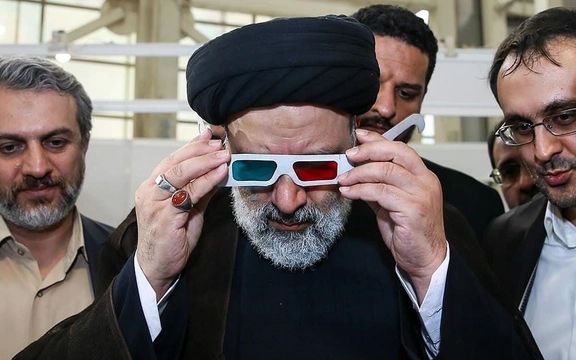
Some political observers in Iran define President Ebrahim Raisi's government as a copycat, based on remnants of former President Mahmoud Ahmadinejad's populist narrative.
However, as noted in a Khabar Online report, also carried by a few other Iranian websites, the Raisi administration at times appears to be a blend of Ahmadinejad's ideas with his reformist predecessor Mohammad Khatami's slogans. The part of the Raisi administration's discourse which is reminiscent of President Khatami's rhetoric is Raisi's frequent allusions to the ideas of Justice and Republic, Khabar Online wrote.
Apart from his political and economic failures, the report maintained that Raisi's attempt to create a new or copied discourse has also failed, though not entirely due to his actions. The idea of a Republic in Iran has been torpedoed by the government's intervention in elections and its undermining of the role of elected bodies such as the parliament and the Assembly of Experts that was supposed to control the Supreme Leader's behavior.
Nonetheless, the Strategic Studies Center, a research body that operates under the President’s Office published a magazine at the end of the first year of Raisi's presidency to outline his discourse. However, the publication did not grab any attention, as all discussions at the time and later were focused on the government's inefficiency and its failure to sort out domestic and foreign problems.
The publication, according to Khabar Online, aimed to emulate what political scientists and economists had compiled to define President Khatami's discourse. However, some of Iranian academics said openly that real progress under President Raisi was way below the level of the discourse. Nonetheless, what Raisi's men put together also used Ahmadinejad's populist rhetoric.
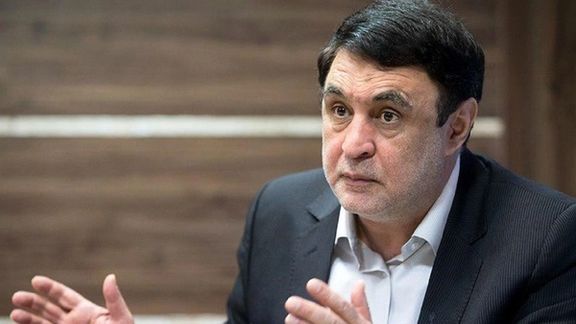
Conservative analyst Nasser Imani pointed out that what Raisi's aides assembled as his discourse does not align with his behavior and his government's performance. Imani pointed out that the government's overall performance, marked by the infiltration of fake revolutionaries in the government. Imani even pointed out the "paradoxical conflict" between Raisi's performance and the ideas of justice and republican principles. This, he said makes Raisi's statements hard to believe.
Meanwhile, in an interview with Rouydad24, Morteza Ezzati, an academic at the Teachers Training University in Tehran remarked that "The Raisi administration is incapable of detecting the country's problems and making decisions to solve them." Referring to the ill-defined ideals and discourse of the administration, Ezzati added, "No ideal is significant enough for which the government could put pressure on the people."
Ezzati further suggested that infiltrators who do not wish for the country's current situation to improve exacerbate the situation to prevent an agreement between Iran and the West that could help end the country’s economic crisis. He views the presence of infiltrators in the government as the most likely explanation for the current political impasse and economic crisis.
Explaining the impact of ultraconservatives on Iranian society and the country's international relations, Ezzati gave the example of advocates of BRICS as a substitute for a nuclear deal with West. He pointed out, "BRICS is an agreement between governments, but it cannot reduce the impact of sanctions because sanctions are not imposed by the private sector. With or without BRICS, any entity in China trying to engage in further trade with Iran will inevitably come under US sanctions."
He reiterated, "The obstacles to trade will be eliminated only with the coming to power of a government in Iran that attaches a high priority to coming to terms with the international order." On the other hand, he argued that "current decision-makers in Iran cannot make decisions that can overcome the economic impasse by ending the sanctions."
Ezzati concluded by stating, "Raisi's government is not capable of advancing a dialogue to secure Iran's interests because it cannot make decisions. However, under excessive pressure, it may take negotiations seriously."
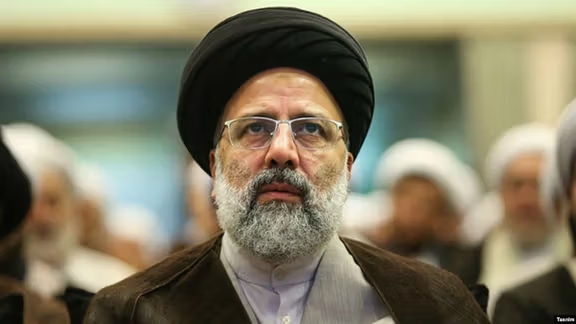
In an unexpected move, the Council on Foreign Relations (CFR) has invited Iran’s President, accused of gross human rights violations, for a meeting this month.
Although no announcement could be found on CFR’s website, a member of the Council, Iranian Jewish well-known writer Roya Hakakian wrote a post on X sharing information that she was invited to the meeting but turned down the invitation. Iran International wrote to the Council on Foreign Relations asking for clarification but has not received a response at the time of this publication.
The date of the meeting is not clear, but Raisi will attend the United Nation’s annual General Assembly taking place in New York City from September 18-26.
Hakakian replied to the invitation saying, “Thank you for this invitation, which, I'm afraid, I must decline. While I am an absolutist when it comes to the value of dialogue, I see the presence of Ebrahim Raisi at the Council on Foreign Relations as a political baptism for a man who has been implicated in countless crimes…”
Raisi, a hardline cleric, who is fully loyal to Iran’s authoritarian rule Ali Khamenei, was elected president in June 2021, in a vote that excluded all the main candidates by a decision of the Guardian Council, a constitutional body composed of Khamenei supporters which reviews candidate credentials. The review is an opaque process and reasons for rejecting a candidate are never transparent.
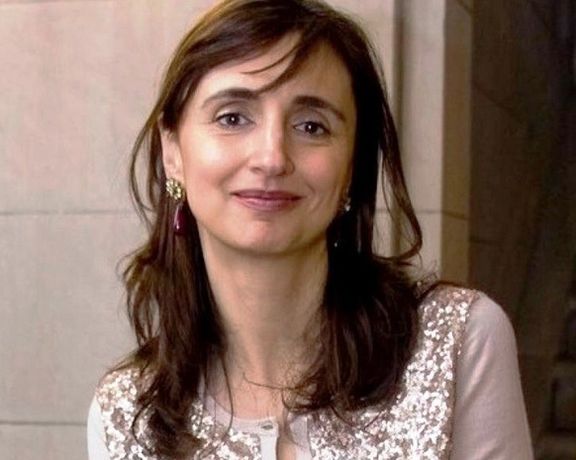
Before becoming a president by Khamenei’s anointment, Raisi spent almost four decades in the Islamic Republic’s notorious “Judiciary”, also controlled by Khamenei since the early 1990s. It was there in 1988 when he was appointed to a small and secret “death commission” that decided to execute thousands of political prisoners serving their sentences.
In an interview with CBS’ 60 Minutes last September Raisi did not deny his involvement.
Young men and women belonging to opposition groups, some violent, were summarily tried without due process and up to 5,000 were killed in prisons.
“Dialogue is reserved for those with whom we have disagreements. For criminals like Raisi, the only venue for conversation must be a court of law,” Hakakian wrote to CFR.
But Hakakian and many other Iranian Americans are furious not just for Raisi’s culpability in one crime in 1988, but also for his role and responsibility as President during the Women, Life, Freedom protests that rocked Iran after Mahsa Amini’s death in hijab police custody last year.
As young people came into the streets to demand answers for her death, security forces armed with shotguns and military grade weapons began shooting them, a behavior that occurred repeatedly for months. The real death toll has not been announced but human rights groups have estimated that more than 500 civilians were killed, hundreds seriously injured and around 22,000 arrested. After hasty trials without due process, seven people were hanged and several face execution and the death penalty.
Raisi and his government have repeatedly said that the protests were riots instigated by the United States and have not held any law enforcement agent of official responsible. In December, he vowed “no mercy” in dealing with the protesters.
“As a proud naturalized American citizen, I cannot help but think that providing such a storied platform to such a man will be legitimizing him, and it is, therefore, an insult to the memory of the protestors who were, and are, fighting for democracy, and it is, therefore, profoundly unamerican,” Hakakian told the Council on Foreign Relations.
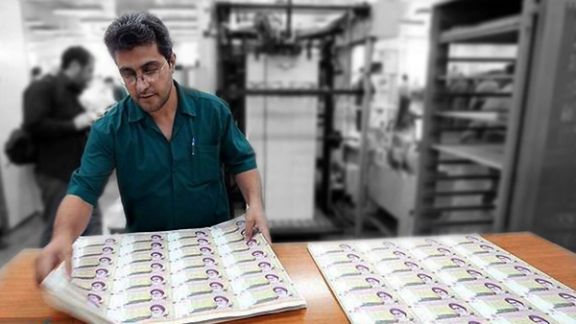
As the Iranian government claims economic successes, a central bank report shows the money supply increased by 45% this year, heralding more high inflation.
President Ebrahim Raisi has been making speeches claiming to have controlled inflation and reduced money printing, promising that the 50-percent inflation rate will drop to 30 percent in March 2024.
However, a report by the Central Bank of Iran (CBI) quoted by media in Tehran says that in April 2023 the money supply showed a 45-percent growth over the same time last year. Money in circulation reached a staggering 88,700,000 trillion rials or around $177.4 billion calculated based on the exchange rate of 500,000 rials per dollar.
This is the highest level of money in circulation in Iran’s history, fueled by the government’s borrowing from the CBI that inevitable leads to printing money without any foreign currency or gold backing.
The Islamic Republic has always been printing excess money in its 44-year history, but at different tempos. When oil export revenues were high enough to support government expenditures, less money was printed. However, when oil prices declined or Iran was subjected to oil export sanctions, printing increased and rial’s value suffered. Sometimes the rial remained relatively stable for a few years, such as the second half of the 2000s, when oil exports and prices were high.
In 1978 before the revolution, one US dollar bought 70 rials, compared with around 4,000 in early 2018, and 500,000 now.
The United States withdrew from the JCPOA nuclear deal in May 2018 and imposed both oil export and international banking restrictions on Iran. That quickly translated into higher inflation and a hasty retreat of the rial. The process has only picked up speed in the past year, as the rial fell from 260,000 to 500,000 per dollar.
Other factors that have not allowed the oil wealth to boost the economy, which has had no growth since 2012, are an inefficient economic system and lack of foreign investments.
Estimates by Iranian economists indicate that 80 percent of the economy is controlled by the government, which controls banking, automakers, and the energy sectors, among many others. Political appointment of managers, nepotism, government interference and bad planning have led to inefficiency.
These factors in addition to international and US sanctions due to Iran’s confrontational foreign policy have prevented any meaningful volumes of foreign investment. This has left the economy mainly dependent on oil export revenues and more vulnerable to sanctions or low energy prices. Lack of investments have even damaged production in the oil and natural gas sectors, with less than one-tenth of investments compared to Saudi Arabia, and little technology infusion. Saudi Arabia’s Aramco energy company has been investing hundreds of billion dollars over the past two decades, with annual investments reaching a staggering $40-50 billion recently.
However, Iran's oil exports have been increasing and reached almost pre-sanctions levels in August, but the additional shipments so far have not translated into a financial improvement, lower inflation and a higher rate for rial.
According to a July report in Aftab News website, affiliated with Iran’s reformists, the government borrowed around $12 billion from four major quasi-private banks in three months ending June 21. To ensure availability of funds, it issued directives to these banks to reduce lending to the private sector, causing the loss of 500,000 jobs amid an already serious economic crisis.
These banks, which already face cash flow problems, rely on the central bank to replenish their reserves, Therefore, whether the government directly borrows from the CBI or from other banks, the money supply increases.

The US Department of State has condemned reports of sexual assault against Nazila Maroufian, a female Iranian journalist, arrested twice this year for her political views.
It described the Iranian regime's systematic use of sexual violence with the aim of "instilling fear, shame, and silence" in victims as reprehensible.
The US Department of State, in a post on its Persian-language page on the X social media network on Friday, wrote: "The use of sexual violence by the Iranian authorities further demonstrates the courage of Iranians against such reprehensible actions aimed at intimidating them."
This department emphasized Washington's commitment to continue supporting the fundamental rights and freedoms of the Iranian people and collaborating with allies and partners to hold human rights violators accountable.
Maroufian, a detained journalist in Evin Prison, announced in an audio file released on Thursday that she had been sexually assaulted during her detention. She also stated that she had gone on a hunger strike in protest to the suffering imposed on her and other women by the government.
This journalist, who had recently been released on bail, was rearrested August 30 in a violent manner.
She began a hunger strike in Evin Prison last week, demanding unconditional release and the restoration of her dignity, as well as punishment for the officials who had beaten her during her detention.
However, Mizan News Agency, affiliated with the Iranian judiciary, dismissed Maroufian’s disclosure as a "claim" and stated that she and her lawyer had not registered any complaint in this regard.
The Iranian government routinely denies reports about torture, harassment, or sexual assault on prisoners and has not addressed the disclosure or complaints of women and men in custody in this regard.






